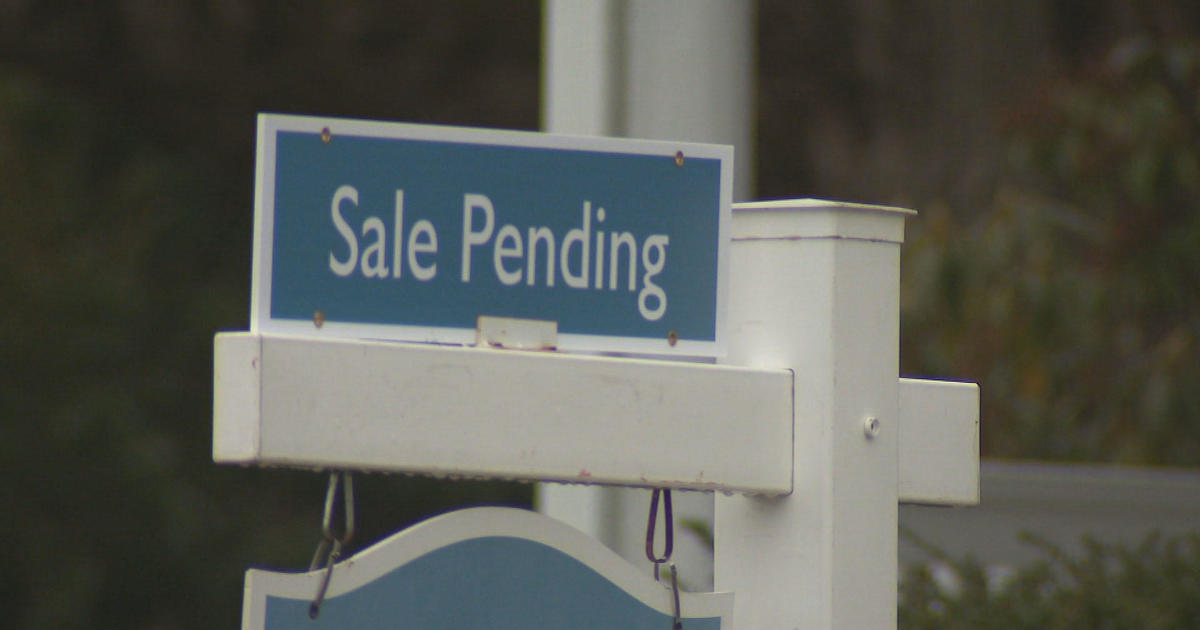Michigan Wind Industry Spins Up Power, Success
EAST LANSING (WWJ) -- Wind power in Michigan has become a big business.
The state is about to join the elite "Gigawatt Club," being one of only a handful of states to generate more than a billion watts of electricity from wind power. More than 40 companies in the wind industry now employ more than 3,000 Michiganders. Hundreds of wind turbines dot several major Michigan wind farms, where millions of dollars have been spent on new power lines to carry that electricity to power-hungry cities.
It's all a heck of a long way from 1995, when the municipal utility Traverse City Light & Power installed the first commercial-scale wind generator in Michigan on a lonely field along M-72, generating a measly 600 kilowatts.
Monday's meeting of the American Wind Energy Association - Michigan, attended by about 100 people, was partly a celebration of that success -- and partly an exploration of what's next for wind power in Michigan, now that the state's landmark legislation mandating that Michigan utilities generate 10 percent of their electricity from renewable sources by 2015 is nearing full effect.
Podcast interview with Rob Gramlich, senior vice president for public policy, American Wind Energy Association
While emphasizing that her organization doesn't advocate for legislation, Jean Redfield, president and CEO of NextEnergy, told WWJ she's seen studies showing it's entirely feasible to move from today's 10 percent to 20 percent renewable power in Michigan by 2020, and as high as 30 percent by 2035.
Podcast interview with Jean Redfield, CEO of NextEnergy
Event participants say the wind energy industry has successfully conquered costs, with mass production and advanced designs driving the cost of wind power down to 4.8 cents a kilowatt -- far below that of a new coal plant or a nuclear plant.
And it has conquered the old bugaboo of wind energy -- the fact that the wind doesn't always blow -- through advanced grid management, sophisticated electronic controls on wind turbines, and the fact that today's more efficient turbines can make more power out of less wind than ever before. Winds over large areas speed up and slow down in slow, predictable patterns, making wind energy management possible at the utility scale.
Comparing wind power to oil exploration, Rick Wilson of Heritage Sustainable Energy put it this way: "We know one thing, we will not be a dry hole."
On top of that, wind is good old-fashioned manufacturing -- hundreds of gears, shafts, housing and other stuff that good old-fashioned Michigan manufacturers are expert at making.
One of Michigan's wind success stories is Ventower Industries, a Monroe company that makes wind turbine towers and other equipment. Ventor's Scott Viciana described his company's business in terms any gearhead would love: "We roll and paint steel. That's what we do. We're proud to do it in Michigan and I think we do it pretty well."
Several Michigan community colleges, including Kalamazoo Valley, have also established renewable energy job training programs. Cindy Buckley, director of training at KVCC, said her school's wind program is an outgrowth of its manufacturing training, using European wind training programs as an example. It's graduated 103 wind technicians since 2009, with a 95 percent placement rate.
As for offshore wind in the Great Lakes, there's huge potential. But Arn Boezaart, director of Grand Valley State University's Michigan Alternative and Renewable Energy Center, said it's controversial enough that offshore wind is probably 10 years off. Boezaart's MAREC has conducted two years of studies in Lake Michigan with a sophisticated test buoy to demonstrate offshore wind's huge potential -- at a spot in the center of Lake Michigan, 35 miles from either shore, where the turbines would be invisible from either shore thanks to the curvature of the Earth.
In brief luncheon remarks, U.S. Sens Debbie Stabenow (D-Mich.) and Ron Wyden (D-Ore.) praised the conference's efforts.
Stabenow she's amused by oil-state politicians who complain that "the government shouldn't be picking winners and losers. Well, we've been picking winners since 1916, the first year of preferential tax treatment for the oil industry. We picked a winner for 100 years and guess what, oil won." She said she wants to see equal tax treatment for oil and renewables.
Wyden, meanwhile, called wind power a huge advantage for rural development.
"We know who's got great confidence in American renewables -- the Chinese," Wyden said. "They're putting a lot of money into American renewables."
Not everyone is thrilled about wind power, of course. Some people think the huge turbines are ugly. Some insist they harm bird and bat populations, despite industry assurances that their studies show they don't. And some insist they cause health problems, despite repeated assurances by the wind industry that no scientific evidence exists for what anti-turbine forces call "wind turbine syndrome." Speakers at the event dismissed claims of health problems as the "nocebo effect," a combination of "no" and "placebo," saying that scientific studies show that health complaints arise only after anti-turbine forces descend on a project area.
A dozen protesters were waving anti-turbine signs in front of Michigan State University's Kellogg Hotel and Conference Center Monday morning.
The event came on the day a final report on renewable energy generation was delivered to Gov. Rick Snyder.
For those interested in learning more about renewables in Michigan, the Great Lakes Renewable Energy Association will sponsor a tour in Monroe next week of Monroe County Community College's 500-kilowatt solar array and Ventower. More at www.glrea.org.



